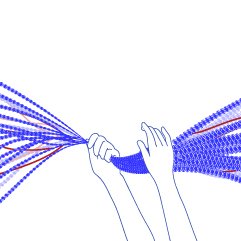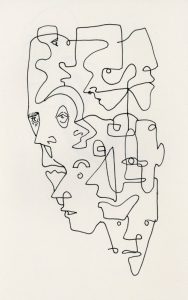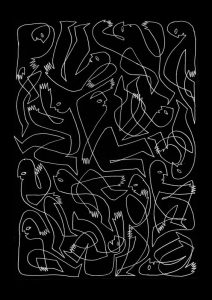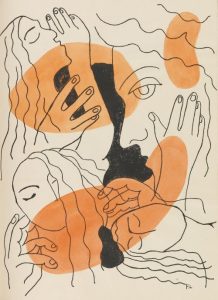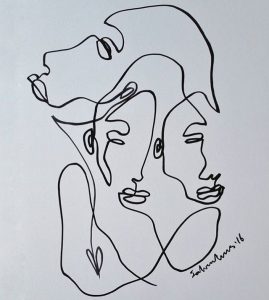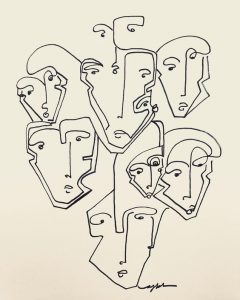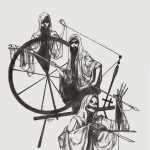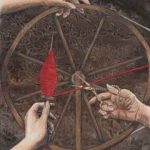
Transfer printing is the transference of an image onto a material, via a substrate. The image is transferred using a combination of heat and pressure. The materials in which this method of printing can be applied to are fabric, wood, ceramics, plastic and glass. For our class, we mainly worked with fabric.
Transfer printing techniques can be divided into three categories: dry transfer, wet transfer and digital transfer.
The dry transfer technique that we were taught in class required the use of a piece of paper, fabric crayons, an iron, baking parchment and fabric. The design is first drawn onto the paper. Then, place the piece of paper with the image facing down onto the fabric. Cover the paper and fabric with the baking parchment before going over it with an iron. Depending on the type of fabric used, adjust the heat setting on the iron accordingly. Evenly iron over the entire piece of paper, lifting the layers of baking parchment and paper at the corners to check if the design has transferred over.
Next, wet transfer. The wet transfer technique can be further divided into two categories – direct transfer and indirect transfer. The materials needed are paper, transprint ink, an iron, baking parchment and fabric. For indirect transfer printing, additional materials will be needed to create the design.
For direct transfer, transprint ink is used to draw the design onto the piece of paper. The ink is then allowed to dry before it is used to print. Similar to the dry transfer technique, place the paper with the design facing down, onto the fabric. Then, cover the paper with a layer of baking parchment before going over it with an iron. Constantly move the iron about to ensure that the entire piece of paper gets an even distribution of heat. This will allow the design to transfer over evenly.
For indirect transfer, an even layer of transprint ink is painted onto a piece of paper. The ink will then be allowed to dry before printing. On top of your fabric, arrange your objects to form the desired pattern or design. Items used can be anything ranging from leaves, threads, yarns, paper cut-outs etc. Cover the objects with the paper with the inked side facing down before finally covering the entire thing with a layer of baking parchment. Similar to the above techniques, iron the whole project area, making sure to move the iron around constantly to ensure that the entire piece of paper receives an even distribution of heat. Additionally, with the iron held down on one side, lift the corners of the layers to check if the ink has been transferred from the paper to the fabric evenly.
Finally, digital transfer. This is made possible through the use of transfer paper. The brand that our class uses is from Magic Touch and can be purchased from Bencoolen. There are two different types of paper for transferring onto soft surfaces (e.g. fabric) or hard surfaces (e.g. acrylic, wood and metal). Depending on the material that you wish to transfer the print onto, you either have to peel the transfer paper immediately (or while the paper is still warm) or when the paper has cooled. The following is from Prof. Galina’s notes:
• Printing on t-shirt Fabric (TTC 3.1) – 400°F (approx. 204°C) for 30secs, hot peel
• Printing on wood (CPM 6.2) – 350°F (approx. 176°C) for 30 secs, hot/warm peel
• Printing on metal (CPM 6.2) – 350°F (approx. 176°C) for 2mins, cold peel
• Printing on tiles/ceramics (CPM 6.2) – 350°F (approx. 176°C) for 40secs, cold peel
Additional things to note!
• Designs will show up better on shiny and smooth fabrics! The colours will appear brighter and more vibrant.
• The design that you’ve drawn onto the paper will be flipped when printed so take note of that when drawing the design.
• Polyester fabrics are not able to withstand high heats and will burn very easily due to the large amounts of plastic used to create the material. Take note of the heat settings on the iron!
CUE TERRIBLE MONTAGE OF HORRIBLE PHOTOS OF SAMPLES:













